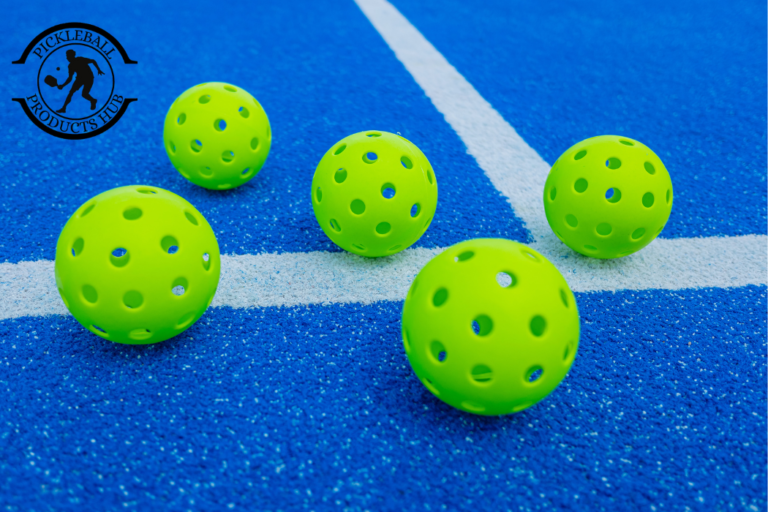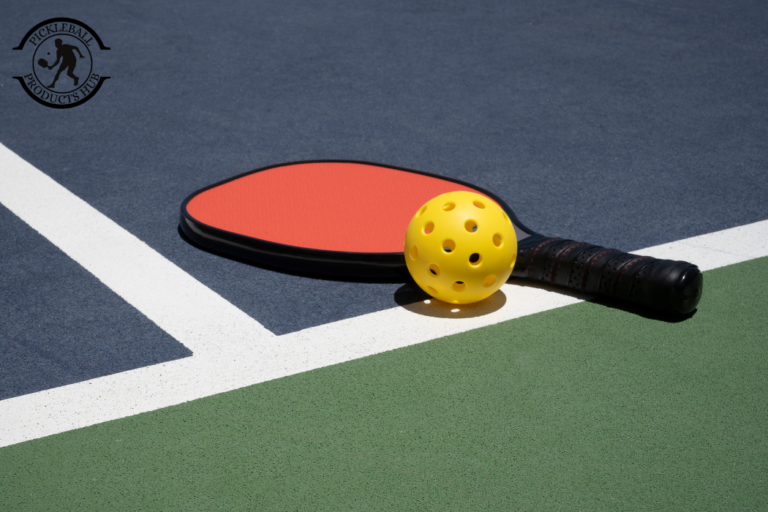The pickleball court vs tennis court may look alike at first, but they are actually very different in size, layout, and gameplay. A pickleball court is smaller and has a special area called the “kitchen,” which helps create a slower, more controlled game that’s easier for beginners. In contrast, a tennis court is much larger, designed for faster play and more running space.
The equipment is also different pickleball uses a paddle and a light plastic ball with holes, while tennis uses a racket and a heavier rubber ball. Because of these differences, the way the ball moves and the style of play change a lot between the two sports. Some people use tennis courts to play pickleball by marking lines or adding a portable net, but using the correct court gives a better playing experience. Whether you enjoy fast action or slower control, knowing these differences helps you choose the right game for your style.
Differences and Adjustments Between Pickleball and Tennis Court
1). Court Size and Dimensions
The most obvious difference is the size. A standard tennis court is much larger than a pickleball court. A tennis court measures 78 feet long and 27 feet wide for singles, and 36 feet wide for doubles. In contrast, a pickleball court is only 44 feet long and 20 feet wide.

This size difference not only affects the way the games are played but also determines how players move and position themselves. Tennis requires greater speed and stamina due to the large space, while pickleball focuses more on reflexes and placement.
2). Surface Materials
Both pickleball and tennis courts can be made using the same base materials like asphalt, concrete, or synthetic surfaces. These are strong and durable materials that help the court last a long time. But because a pickleball court is much smaller than a tennis court, it uses less material. This means it costs less money to build and take care of a pickleball court.
Tennis courts are larger and often come in different surface types. Some are clay courts, some are grass, and others are hard courts. Each surface affects the way the ball moves and how players play. For example, balls bounce slower on clay and faster on hard courts. This variety gives players more options, but also means more maintenance and higher cost.
Pickleball courts are usually made with hard surfaces like concrete or asphalt. These surfaces help the ball bounce quickly and make the game more fast and fun. Most players enjoy playing on smooth, hard surfaces because they make movement easier and improve the feel of the game.
3). Pickleball Court Vs Tennis Court net height.
In tennis, the net is a bit higher. It measures 36 inches (3 feet) in the middle and 42 inches at the two side posts. This makes it harder to hit the ball low over the net, so tennis players need to hit with more power and control. The higher net also matches the fast pace and long-distance hitting in tennis.

In pickleball, the net is slightly lower. It stands at 34 inches in the center and 36 inches at the sides. Because the net is lower and the court is smaller, the game is more focused on quick reactions, smart placement, and gentle control shots rather than power.
This small change in net height makes a big difference in how the game is played. In pickleball, players often stand closer to the net and use short, smart shots to win points. In tennis, players stand farther back and rely on long shots and strong serves.
4). Markings and Layout
The court markings are tailored to each sport. A tennis court has separate baselines, service boxes, and alleys for singles and doubles play. A pickleball court, on the other hand, has a unique non-volley zone (also known as the “kitchen”) that plays a critical role in the game.
5).Differences Pickleball and Tennis Courts
To sum up, the Difference Between Pickleball and Tennis Court comes down to size, layout, net height, and gameplay. Pickleball is more accessible and suitable for smaller spaces. Tennis demands physical stamina and space but offers more technical diversity.Both have their place in the sports world, and many players enjoy both depending on the occasion.
Pickleball Court vs Tennis Court: Pros and Cons
Let’s take a look at some quick pros and cons for each:
Pickleball Court Pros:
- Smaller size, easier to build
- Lower cost
- Great for all ages
- Fast-paced, social game
Pickleball Court Cons:
- Limited shot variety
- Can feel cramped for tennis players
Tennis Court Pros:
- Larger playing area
- More variety in gameplay
- Great for physical fitness
Tennis Court Cons:
- Expensive to build and maintain
- Requires more space
- Not ideal for all age groups
This summary of Pickleball Court vs Tennis Court: Pros and Cons helps in choosing the right option based on individual preferences and space availability.
Can You Make Your Own Pickleball Court?
Yes, you can definitely make your own pickleball court It’s actually easier than many people think—especially if you already have a flat surface available, like a driveway, backyard, or an unused area in a parking lot.
Many people even convert part of a tennis court into a temporary pickleball court by using tape, chalk, or special court markers to draw the lines. You don’t always need to build a brand-new court from scratch. If you just want to play for fun or practice, this is a simple and low-cost option.
If you’re more serious about the game, you can create a dedicated pickleball court by measuring and painting the correct court lines. The official size of a pickleball court is 20 feet wide by 44 feet long, which is much smaller than a tennis court. Because of its size, it takes less space and costs less to build.
Tennis Court to Temporary Pickleball Conversion
One of the most common solutions for pickleball enthusiasts is Tennis Court to Temporary Pickleball Conversion. You can place up to four pickleball courts on one tennis court depending on layout and spacing.
Temporary conversions typically use overlays either painted lines or removable tape. Portable nets replace the tennis net to match pickleball’s lower net height. This allows multipurpose use without committing to a full remodel.
Are Pickleball and Tennis Courts the Same?
While both serve as venues for racket sports, they are not the same. From size to net height to layout and playstyle, each is built for a specific type of gameplay. Asking “Are pickleball and tennis courts the same” is like comparing sprint tracks and marathons they share some features but differ in use and demands.
How To Make Adjustments To Play On Each Court
When switching between courts, players must adjust their mindset and physical movements. Tennis players moving to pickleball need to focus on quick footwork and softer shots, while pickleball players transitioning to tennis must build endurance and power.
Footwork, paddle or racquet control, and shot timing are key aspects. Understanding How To Make Adjustments To Play On Each Court is essential to perform well in both games.
FAQs
Q1: Can I play pickleball on a tennis court?
Yes, many players use tennis courts for pickleball by using temporary markings and nets.
Q2: How many pickleball courts fit on one tennis court?
You can fit up to four pickleball courts on a standard tennis court if space and layout allow.
Q3: What equipment is needed for a pickleball court?
You need a net, paddle, ball, and court markings. Optional fencing and surface coating are extras.
Q4: Are there any rules when converting a tennis court to a pickleball court?
Yes, ensure that the court is safely marked and the net height is adjusted. Portable equipment is often used for temporary conversions.
Conclusion
When we talk about Pickleball Court Vs. Tennis Court, both have their own benefits. The right choice depends on your space, budget, age group, and playing style.If you want something that’s fun, easy to play, and doesn’t need a big area, then pickleball is a great option. It’s cheaper to build, easier on the body, and you can even set it up at home using chalk, tape, and a portable net.
If you enjoy a fast, energetic game with more running and power, then tennis is for you. It needs a bigger space, but offers a strong physical workout and more variety with different court surfaces.We also saw that you can convert a tennis court into a temporary pickleball court, which gives you the best of both worlds. Understanding the differences between these two courts helps you decide what works best for you.





